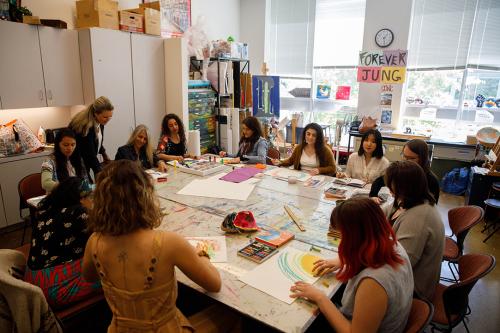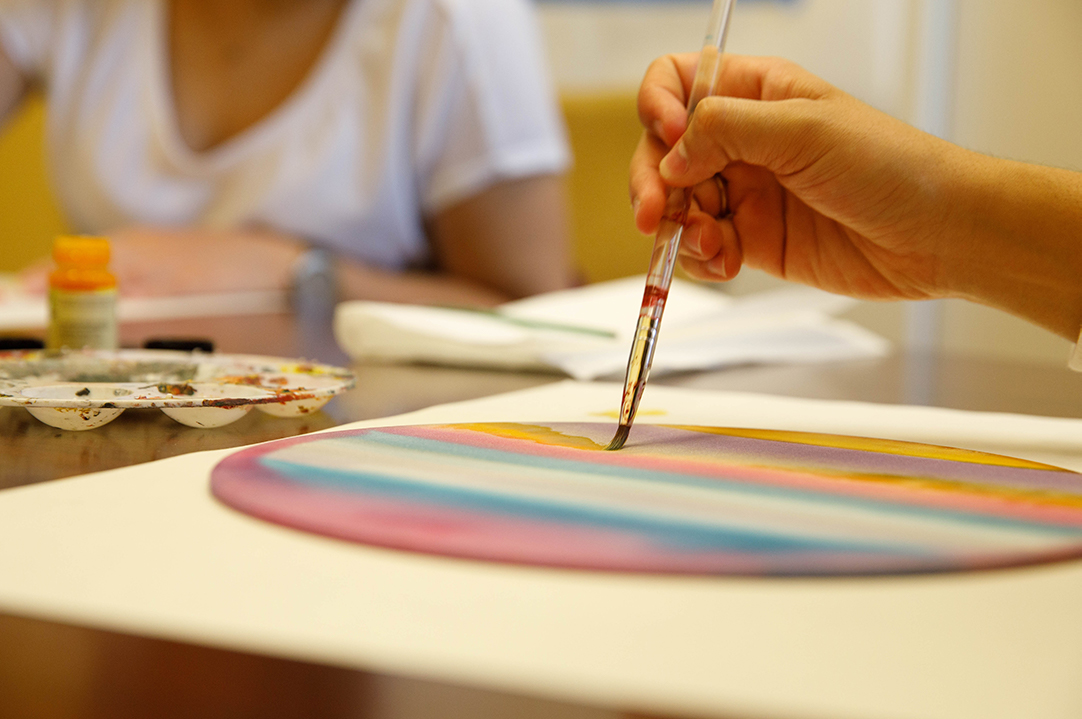What Is Art Therapy?
Art therapy is a human service profession that facilitates verbal and nonverbal expression of thoughts and emotions. When patients transform their thoughts and feelings into tangible images, they can explore them from a different perspective and in a non-threatening manner, which they may not find through traditional talk therapy.
Assessment and therapy through art recognizes that the art process, forms, content and associations are reflections of an individual’s development, abilities, personality, interests and concerns. In art therapy, art is used as a form of communication, giving external form to internal imagery. The natural creative process is often a means of reconciling emotional conflicts and of fostering self-awareness and personal growth.
Benefits of Art Therapy
Art therapists observe and analyze art-making behaviors, art products and verbal associations to formulate diagnostic assessments and treatment plans. Art therapists can:
- Focus treatment on growth experiences, rehabilitation, psychotherapy, remediation, adaptation and/or personality enhancement
- Respond to the strengths and needs of clients by integrating personal training in art and therapy with knowledge of theories of normal and abnormal behavior, visual symbolic expression and intervention methods
- Work with people of all ages, individually or in groups, in settings including health and rehabilitation institutions, schools, nursing homes and corporate structures
- Ameliorate symptoms of depression or anxiety
- Help clients dealing with illness, trauma and loss
- Alleviate job/school related stress
- Improve interpersonal relationships
- Help clients build self-awareness and self-esteem, enhance cognitive abilities and/or foster creativity and personal growth
- Provide case management services
"Whether in clinics, hospitals, schools or community studios, our intentional blend of art-making with psychotherapy enhances self-awareness, fosters relationships and builds community."
Jordan Potash
Associate Professor
Differences from Verbal Therapy
In art therapy sessions, clients create art with the therapist during a session. Art therapy provides a unique opportunity to express feelings without reliance on words. Depending on the needs and goals of the individual client, the art therapist may provide direction with the art-making process, or the client may engage in more spontaneous, expressive work. Once the art piece is complete, the art therapist and client work together to explore the feelings that might arise or the particular meaning the artwork might hold for the client.




